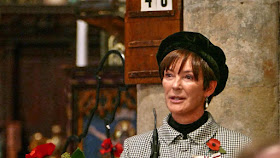 |
Bjorn Anni Agnetha Benny
|
They came to prominence in 1974 when they won the Euro Vision Song Contest for Sweden with the song 'Waterloo'.
They would subsequently go on to sell 400 million records worldwide before they disbanded in 1982.
 |
| ABBA |
*****
*****




















































